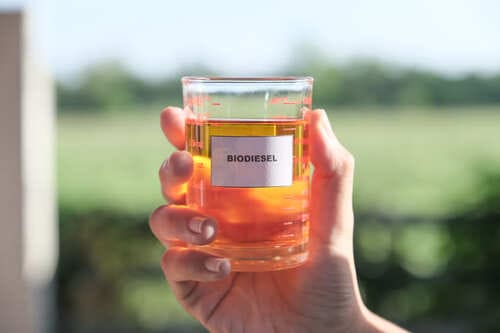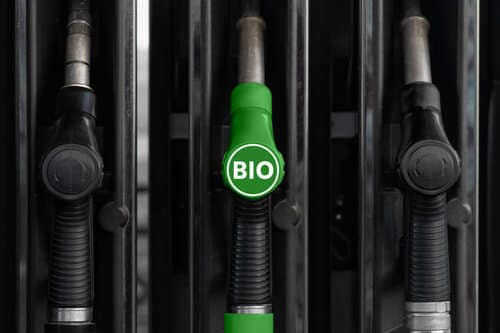
Biodiesel: what it is, advantages and disadvantages, and how it’s made
What is biodiesel, and what is it used for?
Biodiesel is a renewable, biodegradable alternative to diesel fuel, manufactured using a variety of natural sources, including vegetable oils, animal fats, algae, canola, and recycled grease. When used in cars or commercial vehicles, it is mixed with regular diesel as it is rarely used in its pure form. Common blends include B20 (20% biodiesel), B5 (5%), and B2 (2%).

The fuel can be used in diesel engines without the need for any modifications. It also reportedly reduces the amount of particulate matter, carbon monoxide, and hydrocarbons emitted by the engine, which can help improve the rate of DPF regeneration. However, some properties of biofuel can increase the risk of corrosion and fuel filter blockage. If you notice a blockage in the fuel filter or DPF, you can simply replace the components, or use a specialised car DPF cleaner.
Biodiesel production
The main attraction of biofuels is that they can be made from many different renewable materials, namely vegetable and animal fats. Biodiesel is produced through a process known as transesterification, in which the fats or oils chemically react with an alcohol to form fatty acid methyl esters (FAME). Biodiesel and glycerin are the byproducts of this process.
Biodiesel vs Diesel
The main difference between biodiesel and petroleum diesel lies in how they are made and their respective environmental impacts. First of all, diesel is a non-renewable fossil fuel made from crude oil and biomass, and it’s primarily made up of hydrocarbons. It’s a significant contributor to air pollution, emitting particulate matter, NOx, SOx, and other pollutants. Biofuel, on the other hand, is non-toxic, biodegradable and easily renewable.
Advantages of biofuel
- It has a higher oxygen content than regular diesel and contains less sulphur, making it less polluting. It has a lower carbon footprint and helps to reduce harmful smog.
- It’s non-toxic, biodegradable and easily renewable.
- It has a higher lubricity, helping to reduce engine wear.
Disadvantages
- It has a lower energy content than diesel.
- It has to be stored at specific temperatures as if it is too warm, mould can grow, but if it is too cold, it becomes too thick due to the fat.
- It can clog the car fuel filter and system more quickly.
Renewable diesel vs biodiesel

Renewable diesel and biodiesel are both alternative fuels made from renewable resources, but they are produced differently and have different properties. Instead of transesterification, renewable diesel is made through a process called hydrotreating, involving a reaction between fats or vegetable oils and hydrogen at high temperatures and pressures.
It’s also chemically identical to petrodiesel, meeting the same ASTM D975 specification and resulting in a better power output. There are separate specifications for both pure and mixed biodiesel.
Biodiesel cars
Almost all standard diesel vehicles are able to run on biodiesel fuel blends without any engine or fuel system of the vehicle modifications. However, there are some models that use higher concentrations of it than others.
Examples of passenger vehicles that use the highest concentration of biofuel, B20:
- Chevrolet Silverado – a full-size pickup truck with a maximum towing capacity of up to around 6033 kg.
- Range Rover Vela – the 3.0L six-cylinder diesel model can accelerate from 0-60mph in 6.1 seconds
- Ford Transit – one of Ford’s most well-known and best-selling models.
- Jaguar XE 20D – 2.0L Ingenium with 180 peak horsepower and just over 430 N·m torque.
We hope you found this article interesting. For more useful information on engines, fuel efficiency, and car repairs, check out our website. It covers everything from fixing a windscreen to installing a new lambda sensor in your car.
TOP products on the subject:


































